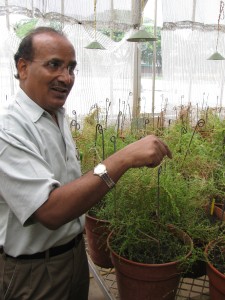- Next-Generation Sequencing as a Tool for Detailed Molecular Characterisation of Genomic Insertions and Flanking Regions in Genetically Modified Plants: a Pilot Study Using a Rice Event Unauthorised in the EU. A rice event? They mean GMOs.
- Genetic Diversity and Dissemination Pathways of Common Bean in Central Europe. Slovenia is mainly Andean, Austria a mixture of Andean and Mesoamerican.
- Spatial distribution and environmental preferences of 10 economically important forest palms in western South America. It’s the water, stupid.
- Genetic variability of microsatellites in autochthonous Podolian cattle breeds in Croatia. Istrian cattle and Slavonian Syrmian Podolians are similar, but not identical. I dunno, I just hope someone is keeping track of all this stuff.
- Biodiversity Assessment of Sugar Beet Species and Its Wild Relatives: Linking Ecological Data with New Genetic Approaches. Where to find them, and how to use them. EcoTILLING is the way to go, apparently.
- Biodiversity ensures plant–pollinator phenological synchrony against climate change. The more pollinators, the better.
- Molecular diversity and population structure of Chinese green foxtail [Setaria viridis (L.) Beauv.] revealed by microsatellite analysis. Domesticated has geographical structure, wild does not. Origin in N China.
- A new species of Brassica sect. Brassica (Brassicaceae) from Sicily. It never ends.
- Latitudinal patterns of diversity in the world collection of pearl millet landraces at the ICRISAT genebank. Aim for 15°–20°.
- Genetic Mapping of Seed Traits Correlated with Seed Oil Percentage in Watermelon. Egusi, to be precise. Aim for bigger seeds.
Hari Upadhyaya of ICRISAT genebank recognized by CSSA
 Congratulations to Dr Hari Upadhyaya, head of the ICRISAT genebank, on being awarded the Frank N. Meyer Medal for Plant Genetic Resources by the Crop Science Society of America. If you’re going to the award breakfast, you’ll be able to hear Hari talk in person about “Crop germplasm to overcome challenges to global food and nutritional security.” If you’re not going, here’s a taste of what you’ll be missing. Well done, Hari!
Congratulations to Dr Hari Upadhyaya, head of the ICRISAT genebank, on being awarded the Frank N. Meyer Medal for Plant Genetic Resources by the Crop Science Society of America. If you’re going to the award breakfast, you’ll be able to hear Hari talk in person about “Crop germplasm to overcome challenges to global food and nutritional security.” If you’re not going, here’s a taste of what you’ll be missing. Well done, Hari!
Si huele a caña, tabaco y brea…
Our friend and colleague Colin Khoury knows a lot about crop wild relatives…
…but he’s a man of many parts, another one of which involves salsa dancing. I can’t locate a video of him strutting his stuff on a Cali dancefloor, but here’s the next best thing, his thoughts on the nexus of salsa and agrobiodiversity, courtesy one of CIAT’s myriad blogs.
The National Heirloom Exposition is here!
Please someone tell us that you’re at the National Heirloom Exposition at the Sonoma County Fairgrounds, Santa Rosa, California, and would like to write about it. More than 20,000 expected to attend, surely one of you wants to blog it for us?
Botanic gardens conserve crop diversity too
We forget sometimes, in our cosy little crop genebank world, that botanic gardens do ex situ conservation of agricultural biodiversity too. 1 Witness the Royal Botanic Gardens Endinburgh and the Really Wild Vegetable Project. I only know about it because they tweeted on it earlier today, and the tweet caught my eye because it mentioned wild cabbage, and had a nice picture too. It turns out, however, that the particular population of wild Brassica oleracea oleracea involved is not in the national UK inventory of crop genetic resources as known by Eurisco, and thus Genesys, which basically just sucks up Eurisco data. 2
@RBGE_Science @BrianFLloyd Map of wild B oleracea oleracea accessions at @WarwickGRU based on Eurisco/Genesys pic.twitter.com/BuADxfcHjF
— AgroBioDiverse (@AgroBioDiverse) September 12, 2013
That only includes material from the Warwick Genetic Resources Unit, which happens to be mainly from the southern part of the UK. So the material mentioned in the Edinburgh tweet, which comes from Fife in Scotland, is likely to add significant diversity to the “national” collection at Warwick. Scope for some closer collaboration between these two institutes? Well, maybe it’s already there and I haven’t caught it. Do let me know if I’m being unfair.